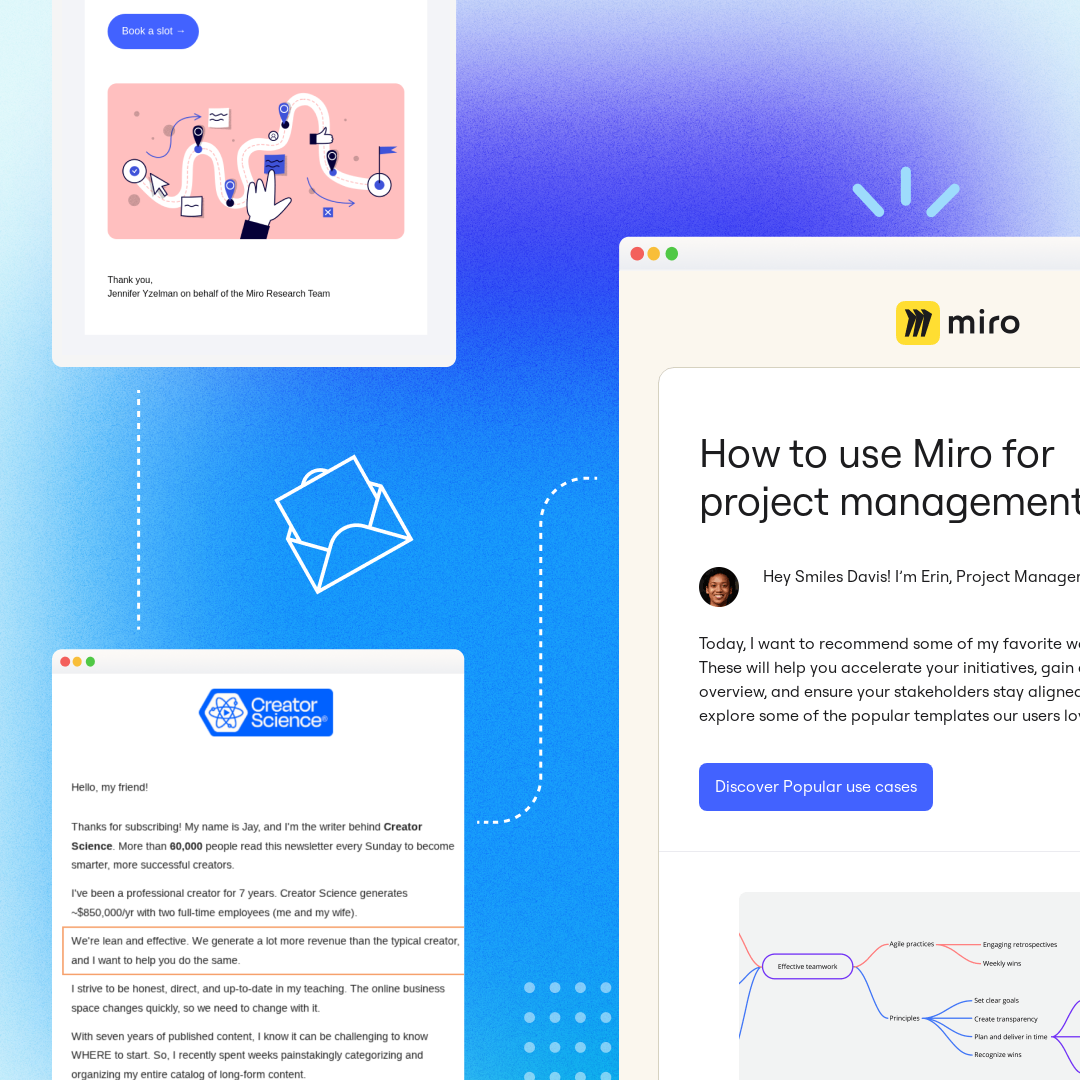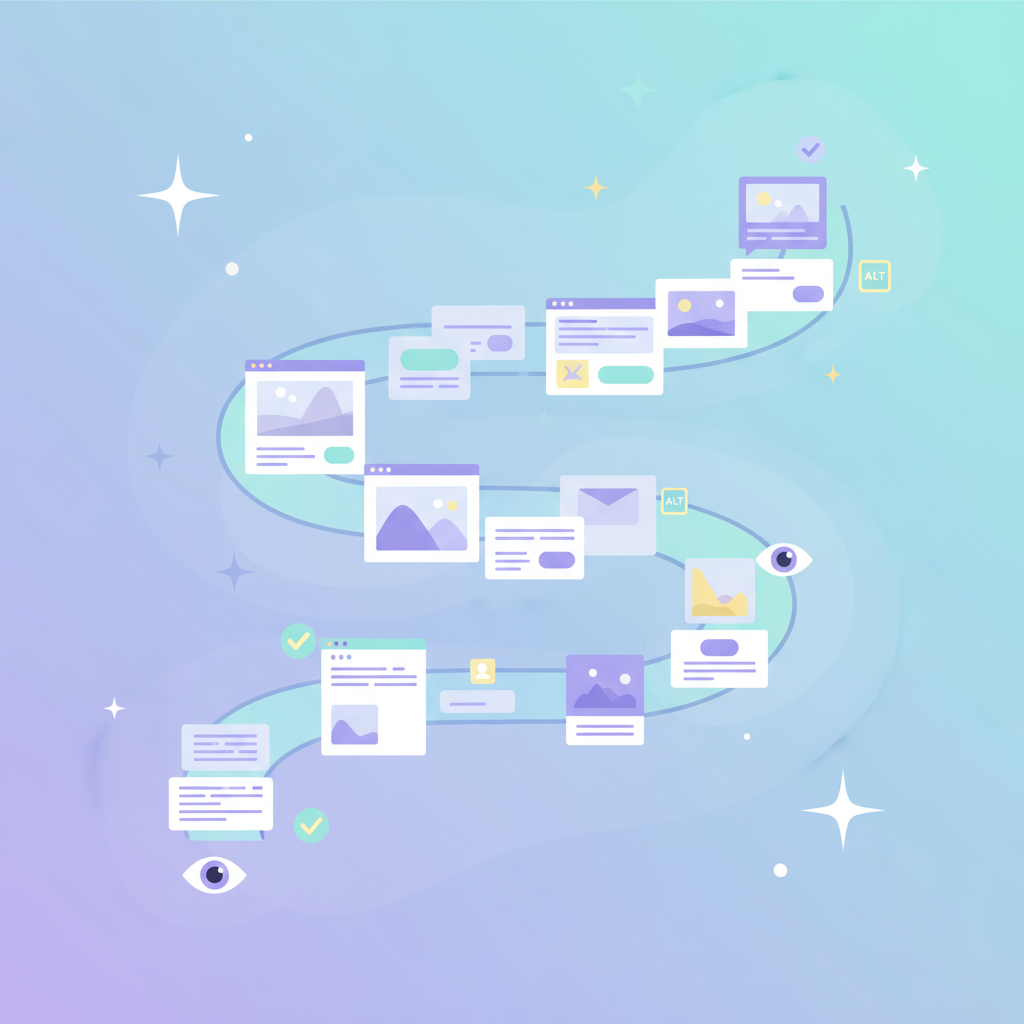
If you have an event coming up, you’re probably thinking up a detailed strategy to make sure as many people as possible hear the news — and email should be an integral part of your plan.Why exactly should you use email to promote your events? For one, email gives you a chance to manage your invitations and RSVP’s so you’ll have a head count of who’s planning to show up. For another, email is the perfect channel to keep in touch with your audience — a way to connect with them before, during, and after the event.Here are the key things you should know about creating an invitation email, plus the four-email sequence you should use for event email marketing that works.
Features of an invitation email
There are two types of events you can promote by email — online events and physical events.
Online events
Online events might include webinars, live streaming events or Twitter chats. An invitation email for an online event will include language explaining what’s happening, when it’s taking place and why the reader needs to come. For instance, software development company Workfront promoted their webinar with a simple block of text — a couple of sentences giving an overview of the event, three bullet points listing the main takeaways you’d get from the webinar, and the date and time.Subject line: Webinar: 3 ways to streamline product development

Physical events
You can promote nearly any physical event via email — a conference, performance, trade show, or just about anything else you can think of.Event email marketing for a physical event will include the same details, talking about what value attendees will receive. In addition to that, provide the location of the event and any special instructions (for example, “only use upper parking lot”). Here, an email promoting an evening of fine jewelry included a paragraph of detail, provided an address and asked for RSVP’s.Subject line: Join us at 19 Bleecker this Thursday

How to create an event promotion email series
Your event email sequence should have four emails: invitation, confirmation, reminder and follow up. Here’s a little more detail on what each email should include, plus some email marketing design inspiration you can draw from as you plan your own emails:
#1. Invitation
The first email in your sequence for event email marketing should be sent about two weeks prior to the event (unless you need to get a certain head count in order to book a venue, or participants have to pay). Really good emails will include the basics of the event — what it is, what value attendees will take home, as well as logistical information such as place, time and cost. Start the invitation email with a clear subject line such as “You’re Invited” and end with a strong, highly visible call to action (CTA) asking your readers to register for the event. Don’t overwhelm your readers with information in this initial email, though; specifics can come later.Subject: You’re invited: A webinar for event marketers

#2. Confirmation
Once your readers have opted in to the invitation and signed up for your event, immediately send them an email confirming they have a spot. This email can be a little beefier, including more details on what’s going to happen (if relevant, send the event schedule) and where people should go. The idea is that, if needed, people can save the confirmation email and refer back for details. In some cases — such as this email from Atom Tickets in partnership with Fathom Events — the email might even serve as a ticket into the event.Subject line: Atom order confirmation

#3. Reminder
People are busy, and upcoming events can easily slip their minds. So it’s up to you to send them reminders. Be clear from the very beginning what the reminder email is, including the event name and date in the subject line. In the body of the email, reiterate what’s happening, when and where it’s taking place, and why the reader should come (but keep this part concise, because you’ve already covered these details in previous emails). For newsletter design bonus points, consider including unique imagery like a map of the venue or a photo from last year’s event.When should you send a reminder email? Depending on the type of event, one to four days in advance is ideal. You can send it closer to the time for an online event (“Don’t forget, webinar in 24 hours”), or a few days ahead of time if people are preparing to travel (“We’ll see you in Chicago this weekend”). If you aren’t sure when to send a reminder email, the sweet spot is two days in advance. You could also do a series of countdown emails during the week leading up to the event, sending one email each day with a fun fact about the event or something else relevant; countdown emails are a great way to create hype around your event.Subject line: Reminder: Crit Group 2019 Opening Reception this Saturday

#4. Follow-up
After the event is over, your job isn’t done: Don’t let your attendees slip away! A couple of days after the event, send a follow-up email. For online events, you could send a recording of the webinar or conference in case people want to listen back through and take more detailed notes. If your event was in-person, include a round-up of photos that people posted on social media during the event.If nothing else, say a simple thank you to people for attending — and if this is an annual or recurring event, tell them to keep an eye out for next year. Here, we have some email marketing design inspiration from Counter Culture, a coffee company that sent a follow-up email full of beautiful pastel colors and coffee pots (they even included an exclusive promo code for readers).Subject line: Thanks for coming by! ⚡

Wrap-up: email marketing design inspiration
With this four-email sequence, you’ll be ready to set your event email marketing plans in motion and draw attendees. Ready to build your own event marketing emails? Check out BEE’s free email templates! The templates are beautiful and painless to use, and BEE's email editor makes it simple to drag-and-drop images, text, and other design elements to create some really good emails. It's the quickest, most effective way to promote your next event.



